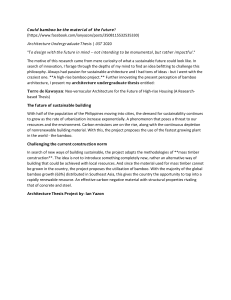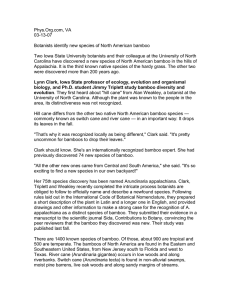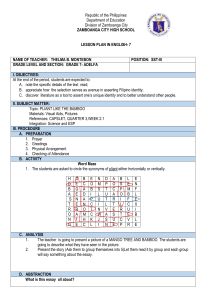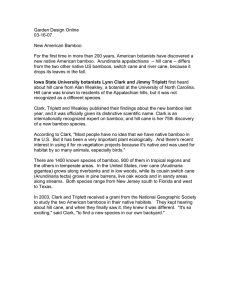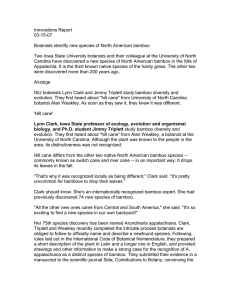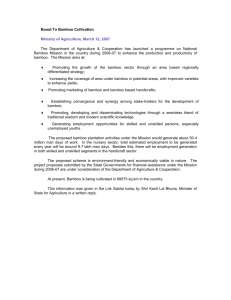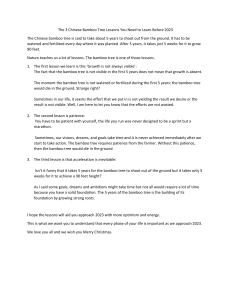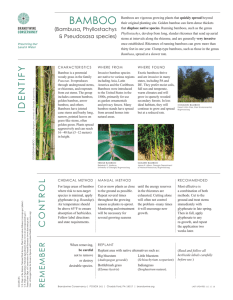LiveScience.com, NY 03-27-07 Bamboo Family
advertisement
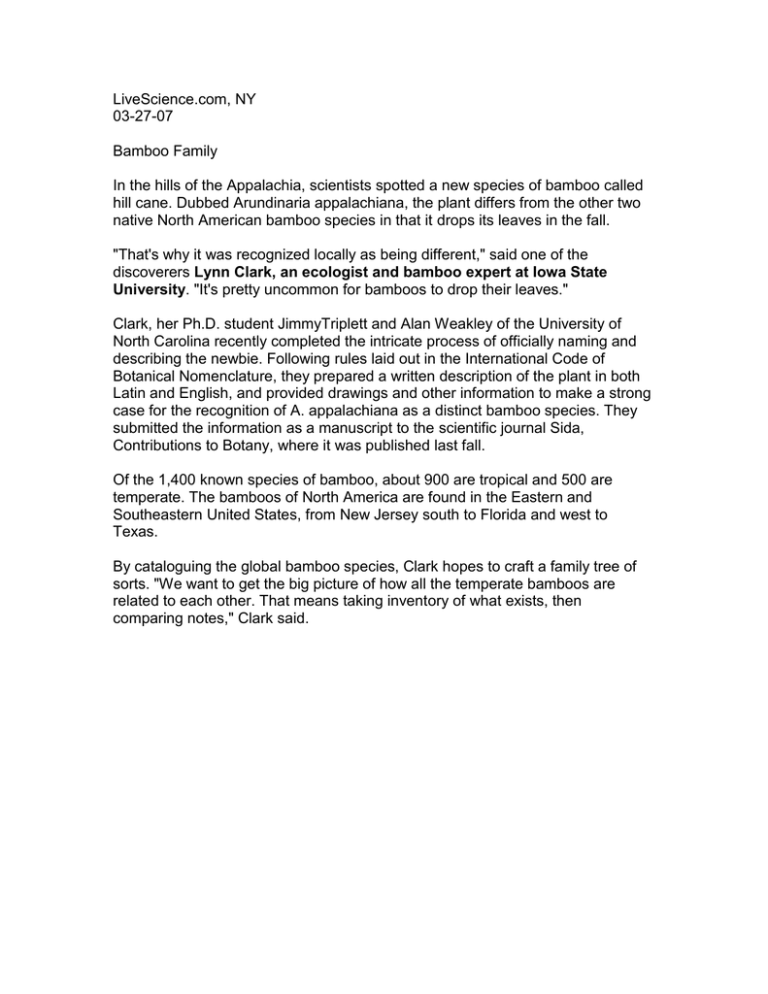
LiveScience.com, NY 03-27-07 Bamboo Family In the hills of the Appalachia, scientists spotted a new species of bamboo called hill cane. Dubbed Arundinaria appalachiana, the plant differs from the other two native North American bamboo species in that it drops its leaves in the fall. "That's why it was recognized locally as being different," said one of the discoverers Lynn Clark, an ecologist and bamboo expert at Iowa State University. "It's pretty uncommon for bamboos to drop their leaves." Clark, her Ph.D. student JimmyTriplett and Alan Weakley of the University of North Carolina recently completed the intricate process of officially naming and describing the newbie. Following rules laid out in the International Code of Botanical Nomenclature, they prepared a written description of the plant in both Latin and English, and provided drawings and other information to make a strong case for the recognition of A. appalachiana as a distinct bamboo species. They submitted the information as a manuscript to the scientific journal Sida, Contributions to Botany, where it was published last fall. Of the 1,400 known species of bamboo, about 900 are tropical and 500 are temperate. The bamboos of North America are found in the Eastern and Southeastern United States, from New Jersey south to Florida and west to Texas. By cataloguing the global bamboo species, Clark hopes to craft a family tree of sorts. "We want to get the big picture of how all the temperate bamboos are related to each other. That means taking inventory of what exists, then comparing notes," Clark said.


